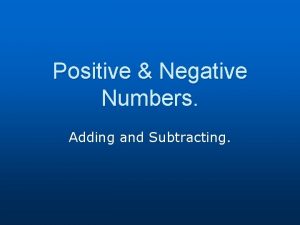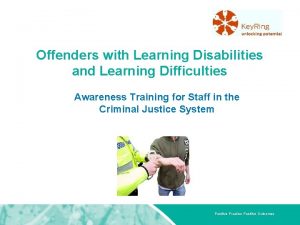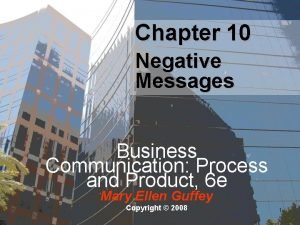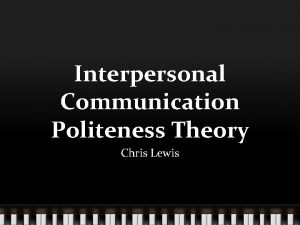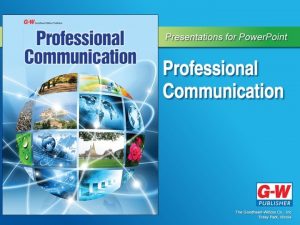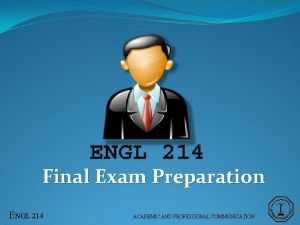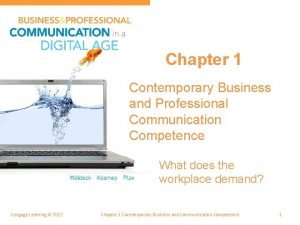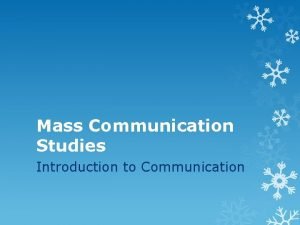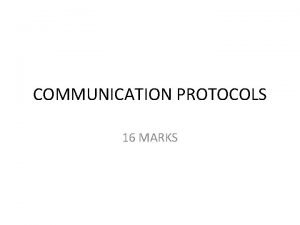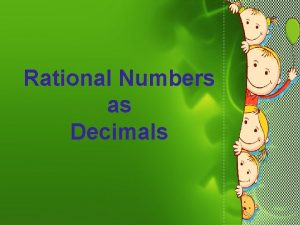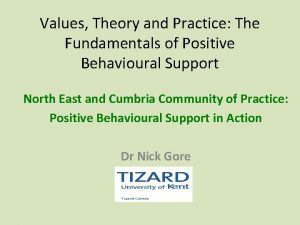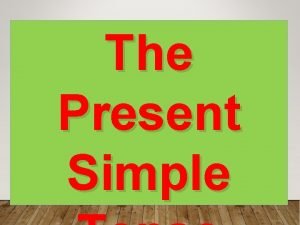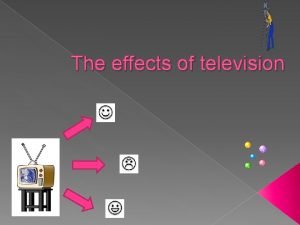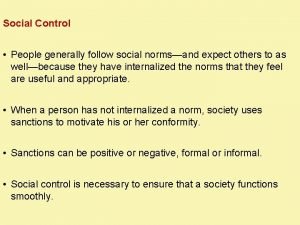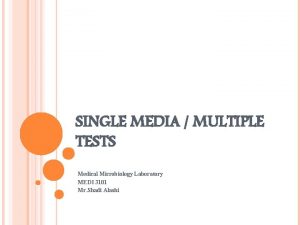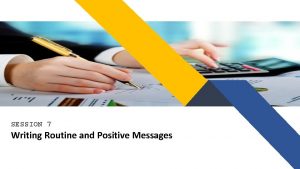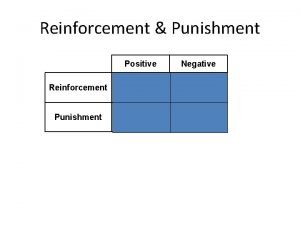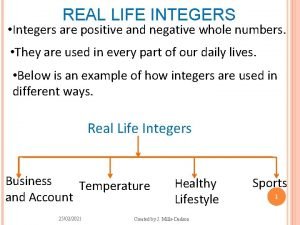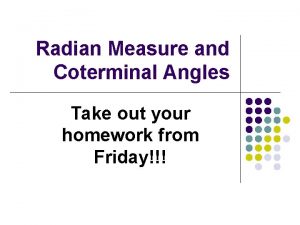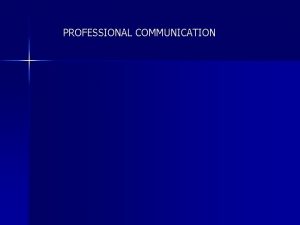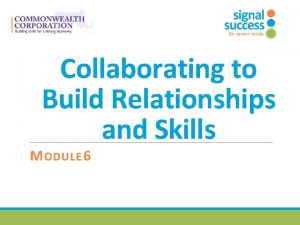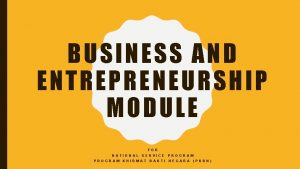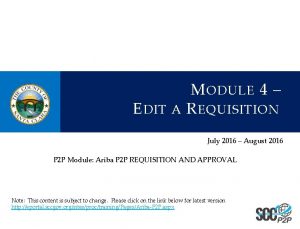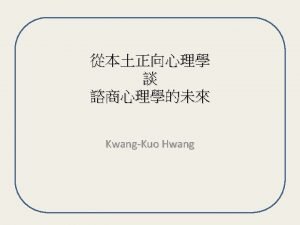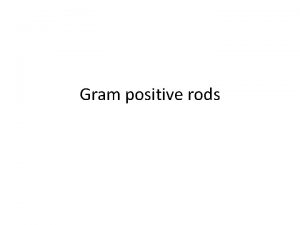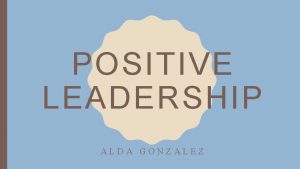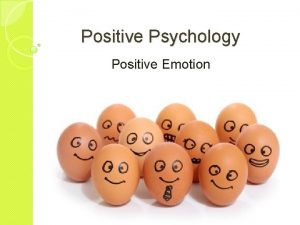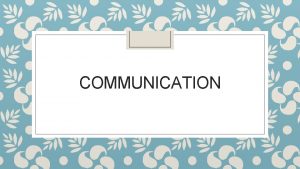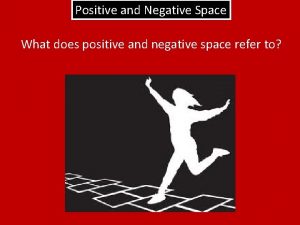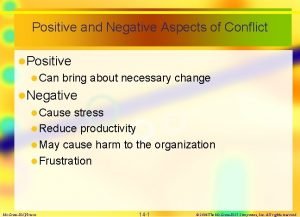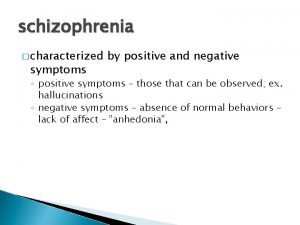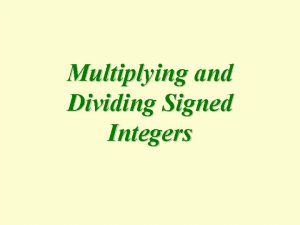Professional Communication M ODULE 3 Professional and Positive



































- Slides: 35

Professional Communication M ODULE 3

Professional and Positive Communication M ODULE 3 A

Learning Target • I can demonstrate my understanding of professional communication by using effective nonverbal and verbal techniques.

Nonverbal Communication Take a few minutes to consider what these different expressions and gestures mean.

Tone Activity Part A Your instructor will call out an emotion or attitude. Read the chosen statement below in that tone. • “I am really very excited about being here. ” • “How can I help? ” • “I am listening. ” • “Thanks. ”

Tone Activity Part B With a partner, take turns reading the conversation on the page using the emotion or attitude given to your group. Supervisor: I see you’re only just starting the project. Intern: We’re running a little late. The last project … Angry Supportive Bored Interested Excited

Practicing Active Listening Part A Listen carefully as different pairs of volunteers model the key elements of active listening. To show you are listening: • Make eye contact and nod. • Paraphrase. • Label emotions. • Ask open-ended questions. • Reflect nonverbal cues back to the speaker.

Practicing Active Listening Part B 1. One person talks about a topic of interest. 2. The other tries to demonstrate an active listening technique. 3. The observer(s) should watch and be ready to identify the active listening technique.

Mini-Interview Practice: Round 1 (2 Minutes ): 1. Find your partner (person with matching card). 2. Discuss: • How do you communicate best? • What are some challenges you have faced when communicating with others? • How did you overcome those challenges?

Mini-Interview Practice: Round 2: Role-Switching (2 Minutes ): Re-approach your partner and pretend they are interviewing you. Do your best to communicate in a more formal and professional manner. • Shake hands and introduce yourself. • Imagine your partner has just asked you to describe a time you successfully used strong communication skills to contribute to a project or team. Explain your communication strengths in connection to the story.

Team Challenge: Line up! Complete the rounds of line up without speaking or writing! Round 1: Line up alphabetically. Round 2: Line up by birthday — oldest to youngest. Round 3: Come up with your own category!

Team Challenge: Line up! 1. What was the most difficult part of this activity? 2. What strategy did the group come up with that allowed you to be successful? 3. In a group setting or an interview when might it be effective to pause and allow yourself to be silent? Why?

Learning Target • I can demonstrate my understanding of professional communication by using effective nonverbal and verbal techniques.

Session Wrap-Up 1. Think about the learning target. 2. How comfortable are you with the learning target? Not Sure Working on It Almost There I Can Do It 3. What have you learned today? How can you apply it?


Effective Written Communication at Work M ODULE 3 B

Learning Targets • I can demonstrate my understanding of professional communication by using effective nonverbal and verbal techniques. • I can communicate professionally in writing.

What Do You Think: Written Communication Place a check on the line next to each type of communication that you have used. Then, answer the questions.

Written vs. Oral Communication Written communication can often convey more complicated ideas and information. 1) You can use this when you need to share a lot of detailed information. 2) You need to re-read your writing and make sure you are being clear.

Written vs. Oral Communication In written communication, it can be harder to know what the writer is feeling. So… 1) You need to describe feelings and sentiments. For example, “I really enjoyed our meeting. ” or “I hope you are doing well. ” 2) You should be aware and try not to sound rude or aggressive.

Written vs. Oral Communication Written communication can be saved for long periods of time. It’s important to … 1) Be extra careful that your writing is accurate and professional. 2) Use written communication when you want a record of what you have said.

Texts Texting is really more appropriate in personal situations, but there are some professional uses. Do’s Do use texts for shorter pieces of information that are time-sensitive Don’ts Don’t text a supervisor, colleague or professional contact without asking first if that is an okay way to communicate. Do include your name at the end if you are texting a professional contact. Do reply in a professional and timely manner if someone sends you a text Don’t send texts far outside a professional schedule, like 11 pm on a Tuesday. Don’t click send before re-reading. Autocorrect has caused many a professional nightmare.

Emails & Letters Most college and career settings require people to be able to write effective emails (and letters) Focus on being: ˃ Polite ˃ Clear (well-structured short paragraphs and simple lists) ˃ Accurate and Correct (check dates, details and grammar twice before sending)

Tips for Writing a Professional Email • Start with a descriptive subject line. • Address the person you are writing by the appropriate name. • Begin with a friendly greeting. • Get to important information right away. • Thank the recipient. • Use a professional closing (signature). • Re-read it twice.

Make it More Professional • Work with your group to come up with ideas about how to improve the sample email.

Write a Professional Email 1. With your group, choose one of the prompts and write a professional email addressing the situation. 2. Use your rubric and tips. 3. Choose one tip that you used and plan to share with class.

Learning Targets • I can demonstrate my understanding of professional communication by using effective nonverbal and verbal techniques. • I can communicate professionally in writing.

Session Wrap-Up 1. Think about the learning targets. 2. How comfortable are you with the learning targets? Not Sure Working on It Almost There I Can Do It 3. What have you learned today? How can you apply it?

Professional Communication

Professional Communication ELL A CCOMMODATION S LIDES

Active Listening Show you are listening by: Making eye contact Nodding Paraphrase: So what you said was … Label emotions: You seem upset about… Ask open-ended questions: What do you think? • Mirroring the speaker’s body language • • •

Written versus Oral Communication • • Written communication is used for detailed information. Written communication can be saved forever. o Use it, when you want to have a record of what has been said.

Written versus Oral Communication • Written communication should be professional. o Re-read your writing and check for errors o Name feelings and sentiments. For example, “I really enjoyed our meeting. ” or “I hope you are doing well. ”

Texts Professional uses for text: Do’s Use text for shorter information that needs an immediate reply. Include your name at the end if you are texting a professional contact. Don’ts Don’t text a supervisor, colleague or professional contact without asking first. Don’t send texts outside a professional schedule, like 11 pm on a Tuesday. Reply in a professional and Don’t use abbreviations or emoticons. timely manner. (ex. btw, lol, etc. )

Emails & Letters Most college and career settings require people to be able to write effective emails (and letters) Make sure your emails are polite and clear (well-structured short paragraphs). Check that your writing is accurate and correct (check dates, details and grammar twice before sending).
 All staphylococci are catalase positive
All staphylococci are catalase positive Positive + positive equals
Positive + positive equals Positive practice positive outcomes
Positive practice positive outcomes Bad news letter in business communication
Bad news letter in business communication Corrective facework
Corrective facework Factors affecting communication
Factors affecting communication Positive message in business communication
Positive message in business communication Negative effects of technology on environment
Negative effects of technology on environment What is oral communication and written communication
What is oral communication and written communication Diff between oral and written communication
Diff between oral and written communication Parallel communication examples
Parallel communication examples A is anything that prevents clear effective communication
A is anything that prevents clear effective communication Engl 214
Engl 214 Business communication competence
Business communication competence Parallel vs serial communication
Parallel vs serial communication Examples of mass communication
Examples of mass communication Serial communication vs parallel communication
Serial communication vs parallel communication Numerator and denominator positive and negative
Numerator and denominator positive and negative Order positive and negative integers decimals and fractions
Order positive and negative integers decimals and fractions Positive form of adjectives
Positive form of adjectives Positive impacts of materials technology
Positive impacts of materials technology Materials technology positive impacts
Materials technology positive impacts Theories and values of positive practice
Theories and values of positive practice Present simple positive
Present simple positive Answer key
Answer key Ashley moxey
Ashley moxey Positive and negative effects of television
Positive and negative effects of television Material technology positive and negative impacts
Material technology positive and negative impacts Negative rights vs positive rights
Negative rights vs positive rights Formal negative sanctions examples
Formal negative sanctions examples Triple sugar iron agar positive and negative results
Triple sugar iron agar positive and negative results Negative school culture
Negative school culture Routine positive messages examples
Routine positive messages examples Difference between positive and negative reinforcement
Difference between positive and negative reinforcement Real life integers
Real life integers How to find a positive and negative coterminal angle
How to find a positive and negative coterminal angle

